Explore some of our military artifacts below.
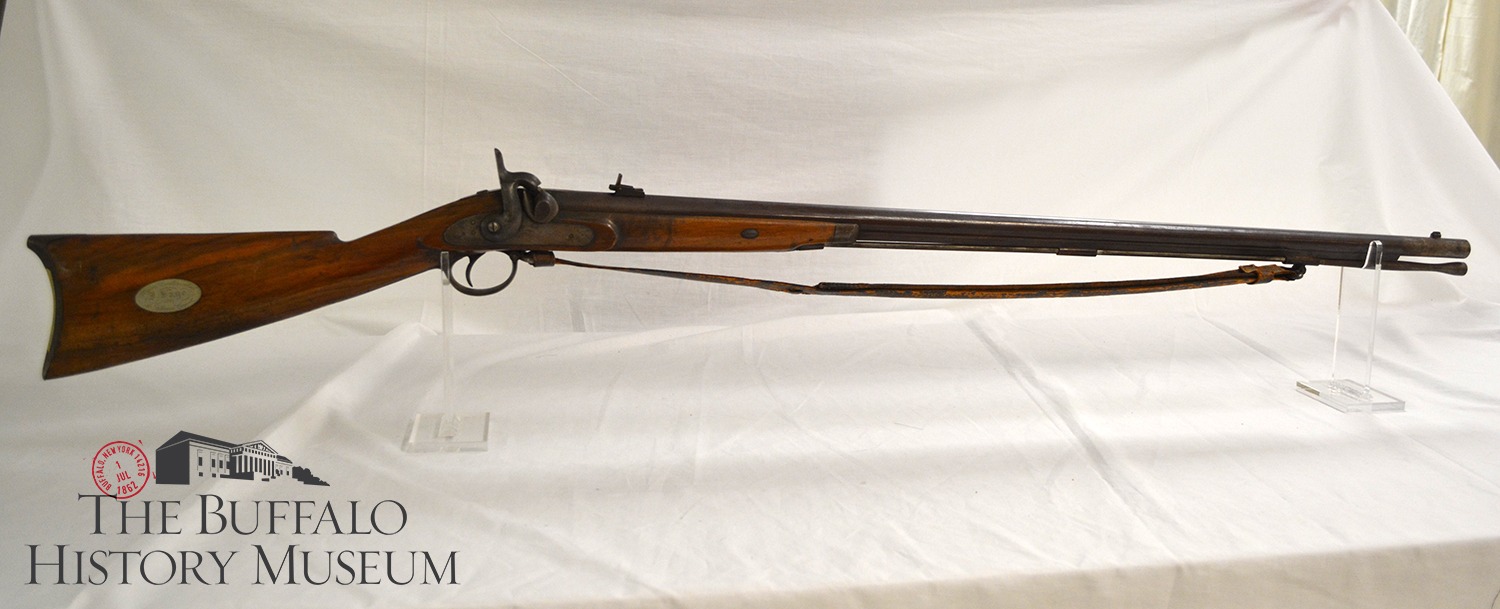
John Sage Rifle
Metal/Wood/Leather
Military rifle carried by John Sage in the Union Continentals during the Civil War. The Union Continentals were a Buffalo guard whose first commander was Capitan Millard Fillmore.
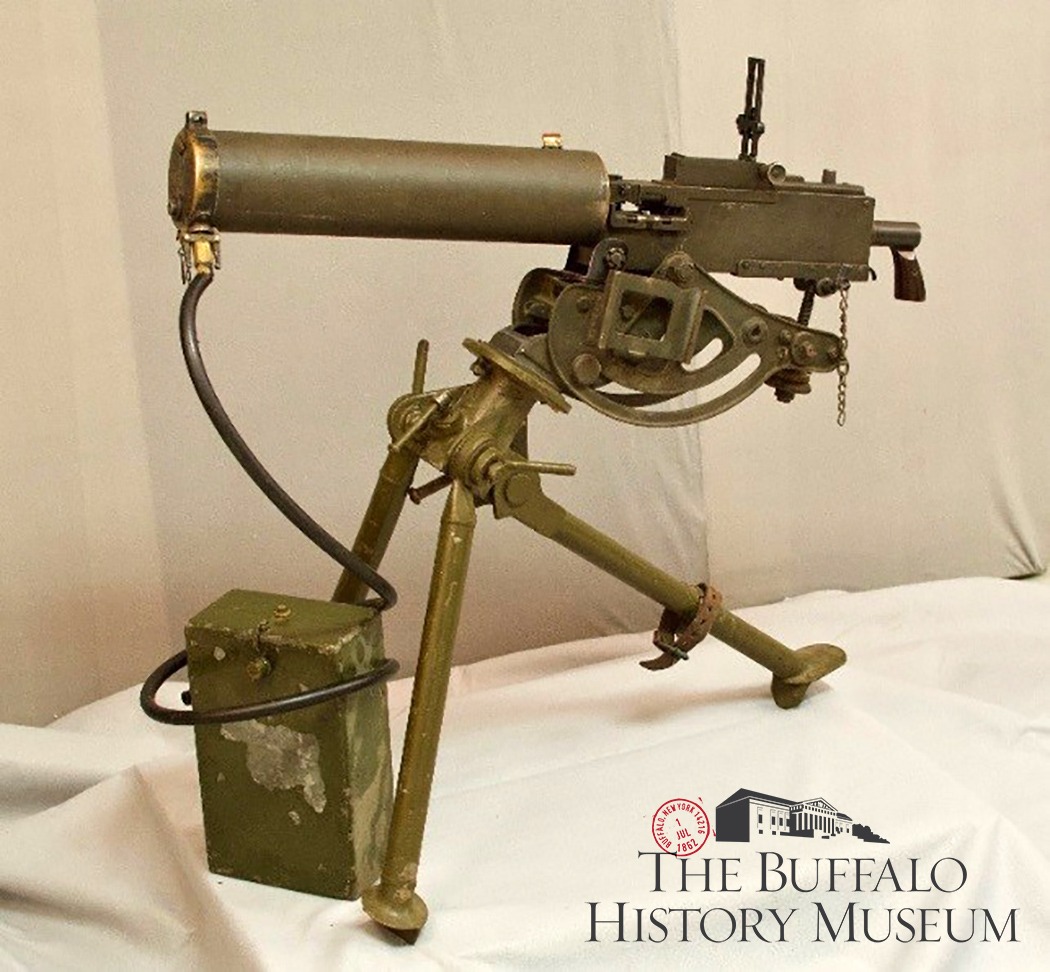
M1917 Browning Machine Gun
Metal
Overheating of the barrels, due to rapid firing, plagued early 20th century machine gun models. John Browning developed a water-cooled barrel that could withstand the belt fed 450 rounds per minute. As a weapon, it was meant to defend a fixed position. This machine gun is .30 caliber.
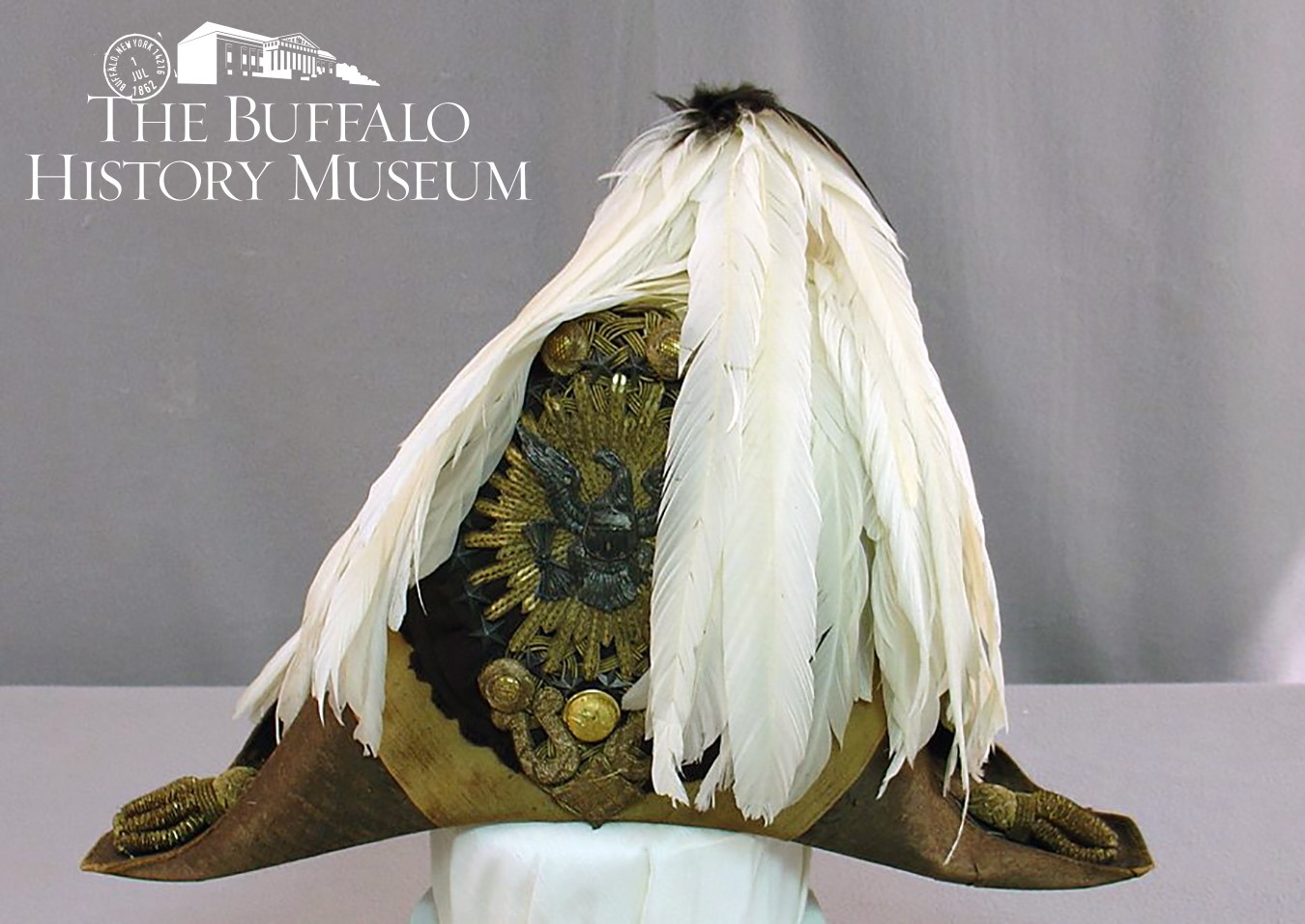
Military Hat
Beaver hide/Swan feathers/Cotton/Silk/Metal
A Chapeau de Bras worn by Major General Bennet Riley. The plume is made of long white swan feathers with a burst of black feathers at the top, which indicates the rank of Major General.
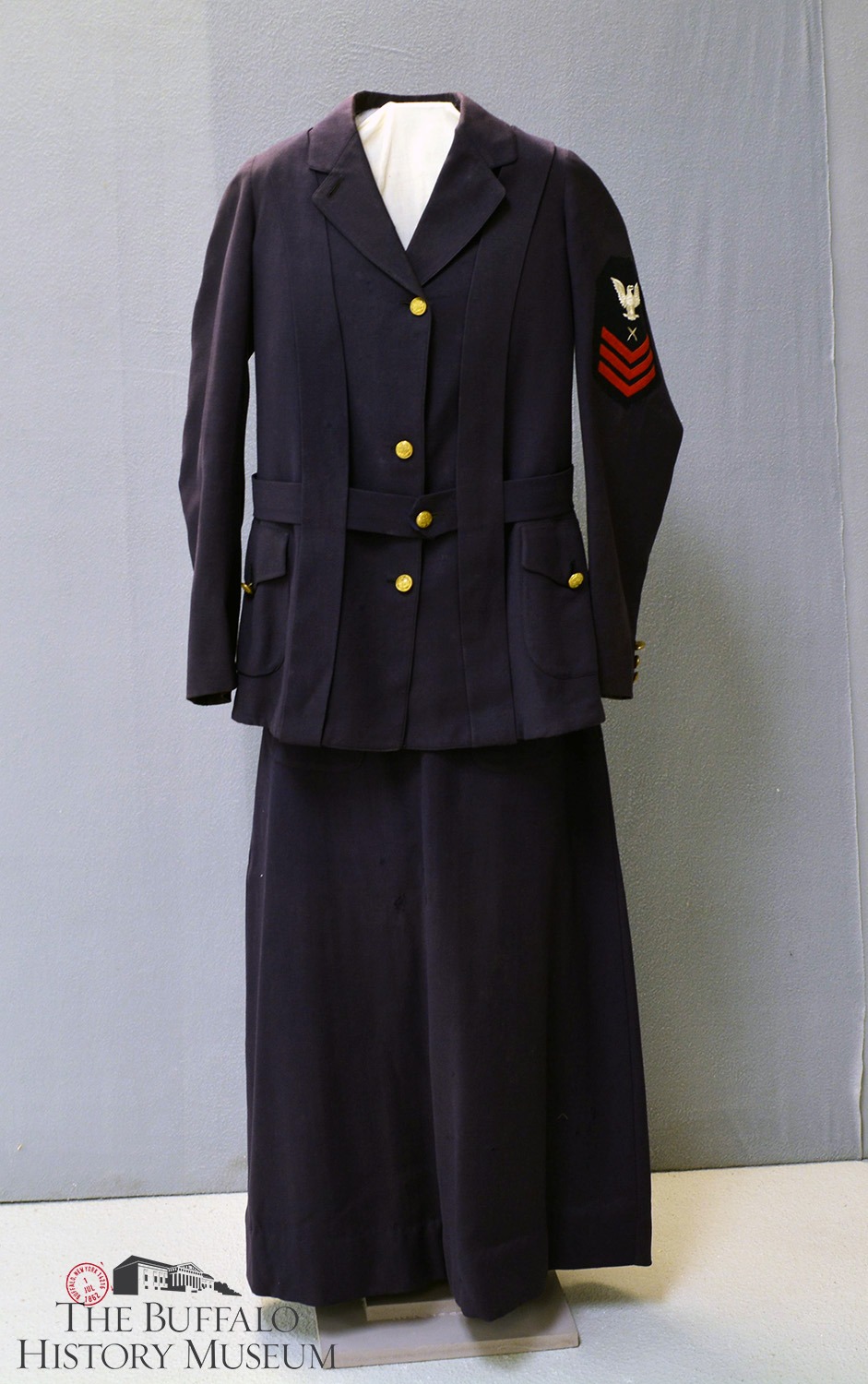
Naval Uniform
Wool/Gaberdine/Metal
World War I Military service uniform belonging to Dorothy Erickson of Buffalo, NY. She was the first woman to enlist in Erie County, NY during WWI. During WWI, the Navy was the only branch of the military which authorized women to serve in non-combat roles.

Saber
Brass/Steel/Ivory/Wood
This saber was used by Major General Peter B. Porter, in the New York State Militia during the War of 1812. The grip has a wood core with ivory plates on both sides and the scabbard is fabricated out of brass sheet, decorated with embossed and applied cast medallions.
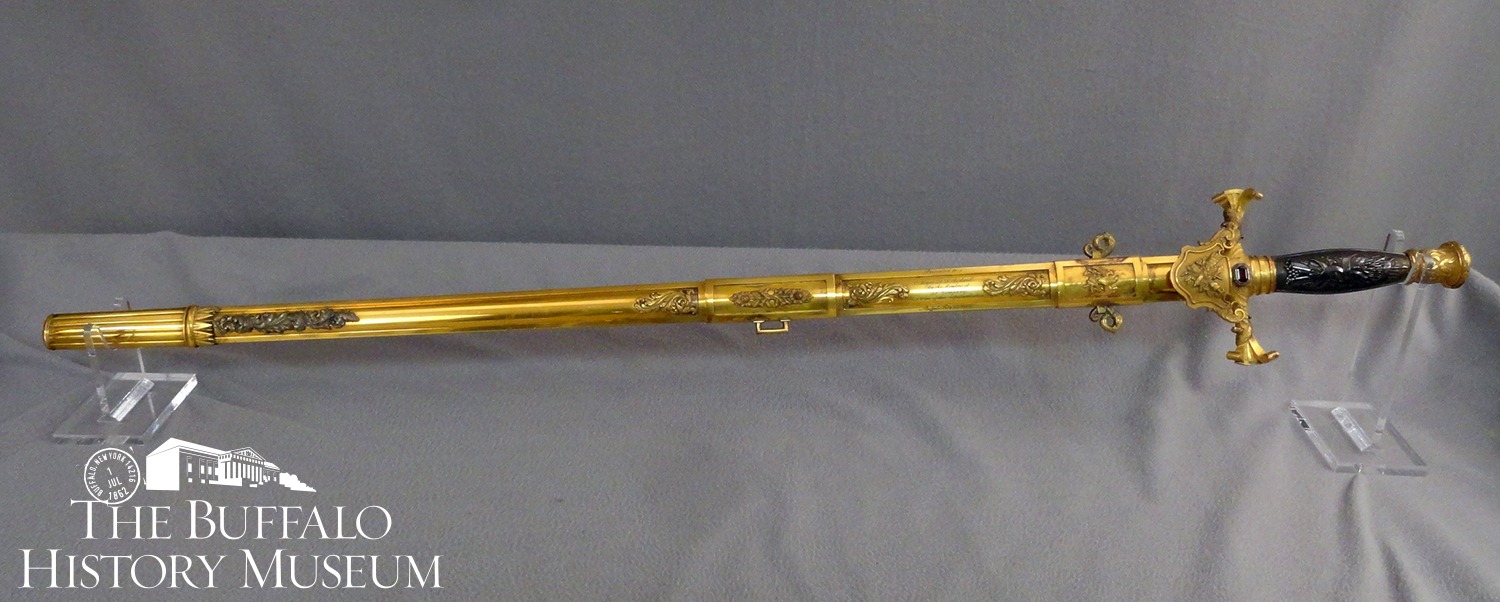
Sword
Metal
A presentation sword given to Major Daniel Davidson Bidwell by the member of “D” Company, ‘as a token of their respect and esteem.’ After the outbreak of the Civil War in 1861, Bidwell joined the New York Militia and later helped organize the 49th New York Volunteer Infantry, to which he was later appointed colonel.
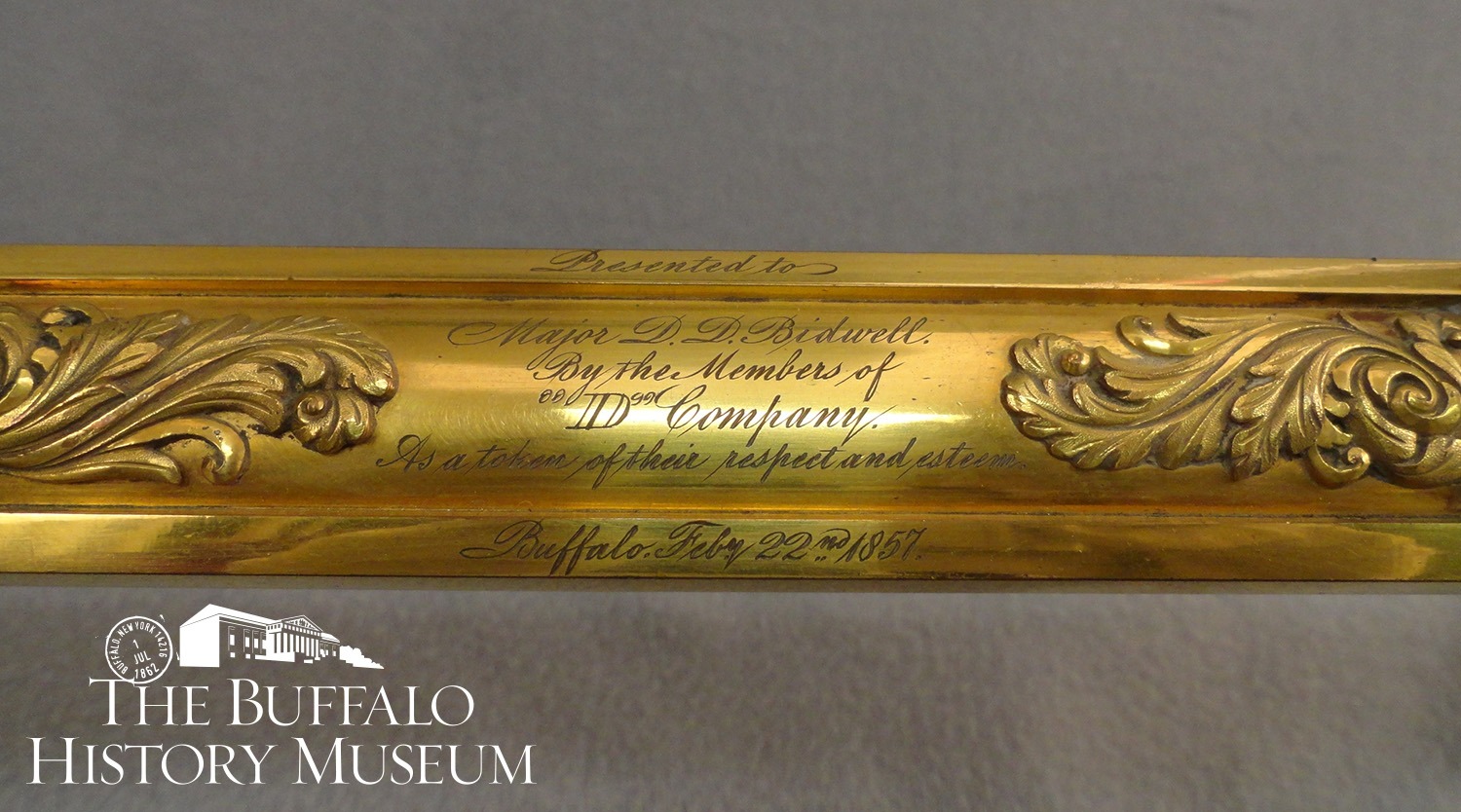
Sword (Detail)
Metal
A presentation sword given to Major Daniel Davidson Bidwell by the member of “D” Company, ‘as a token of their respect and esteem.’ After the outbreak of the Civil War in 1861, Bidwell joined the New York Militia and later helped organize the 49th New York Volunteer Infantry, to which he was later appointed colonel.

Robert Fleming Rifle
Metal/Wood
This US Model 1803 made at Harper's Ferry in 1804 contains a rifled barrel, distinguishing it from smoothbore weapons. Harper's Ferry Armory and Arsenal, located in West Virginia, was the second armory to be commissioned by the US Government in 1799. This rifle was used by Robert Fleming at the battles of Chippewa, Lundy's Lane, Beaver Dam, and Fort Erie during the War of 1812.
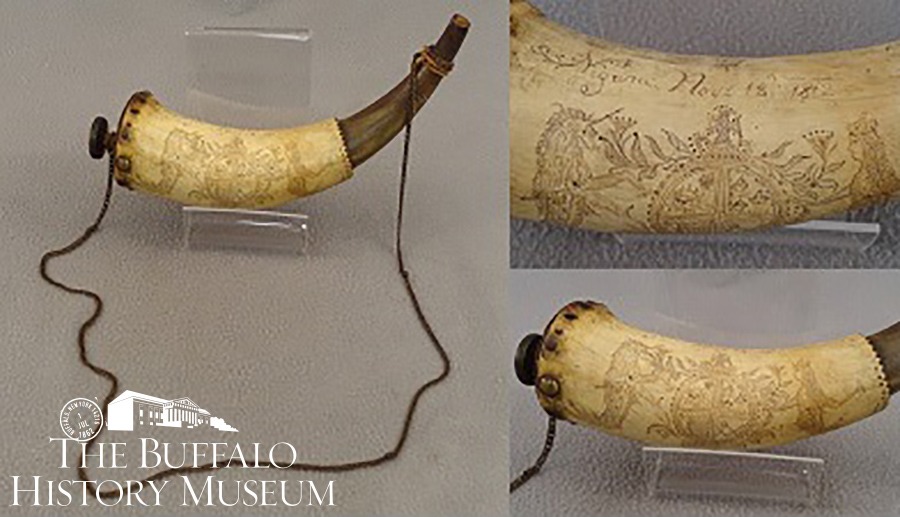
Powder Horn
Bone/Metal/Wood
A bone powder horn found on the plains of Chippewa on July 5, 1814, by Benjamin Tubbs, a volunteer in General Porter's command. The horn features carved mythical creatures flanking a seal in the center made up of masonic symbols and fleurs-de-lis.
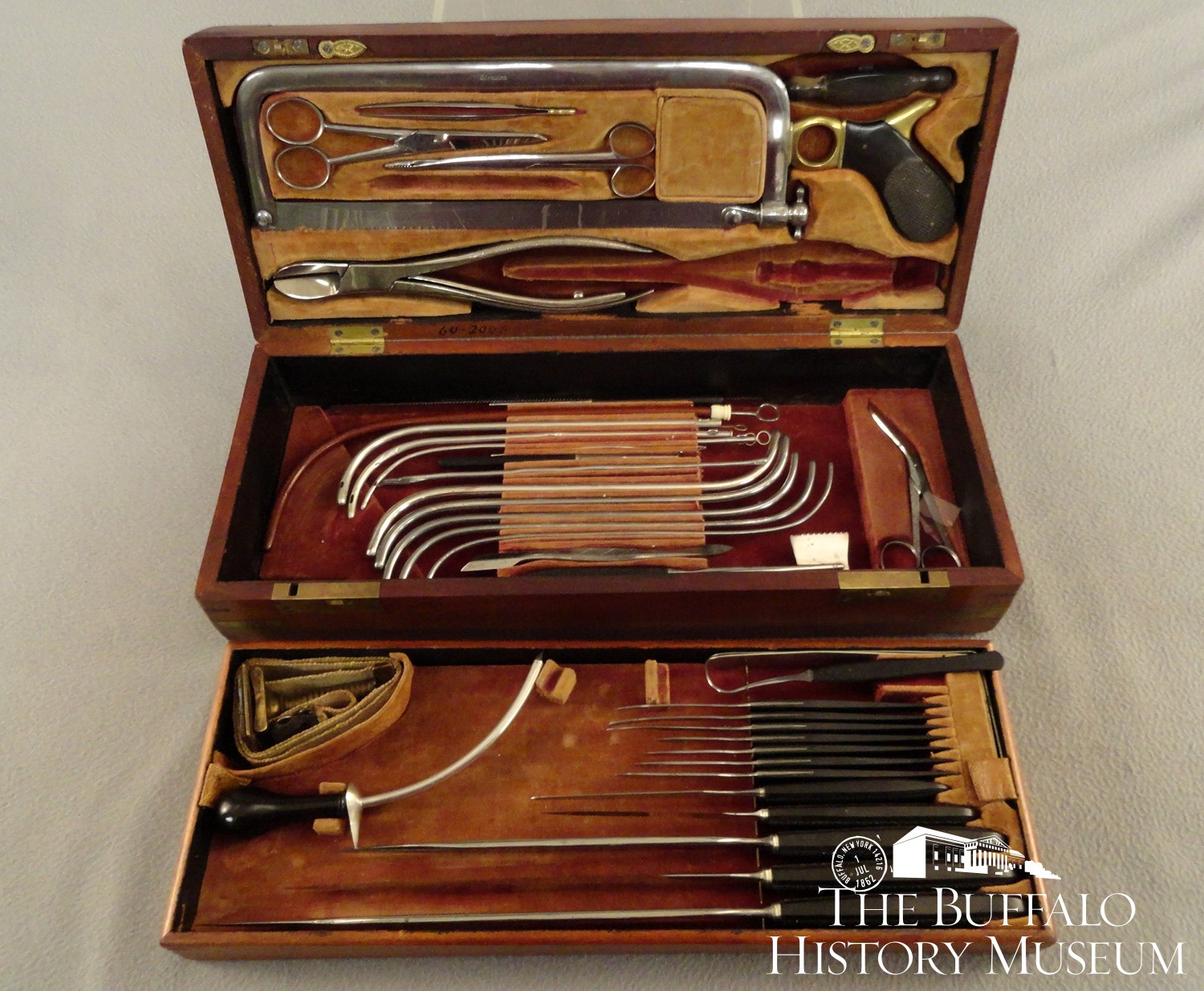
Surgical Kit
Wood/Metal/Cloth/Leather/Bone
This surgeon kit belonged to William H. Gail M.D. He was the Asst. Surgeon, 18th New York Cavalry during the Civil War. A field surgeon’s kit consisted of the instruments which were likely to be needed in a medical emergency on the battlefield. It was not intended to supply all the medical instruments of a military hospital.

Uniform
A U.S. Navy Aviation dress uniform worn by Gibson Gardner. He was stationed to the U.S. Naval Seaplane base on the French island of L’Abervrach in the English Channel. Gardner remained in the Naval Reserve as a Lieutenant Commander.